
The East Is Red: The Sino Soviet War is a board wargame published by Simulations Publications Inc. (SPI) in 1974 that simulates a hypothetical invasion of Manchuria and North China by Russia using 1970s armaments.

The East Is Red: The Sino Soviet War is a board wargame published by Simulations Publications Inc. (SPI) in 1974 that simulates a hypothetical invasion of Manchuria and North China by Russia using 1970s armaments.
The East Is Red is a two-player game in which one player controls the Russian invaders, and the other player controls Chinese defenders.
The game includes:
The East Is Red uses an alternating system of "I Go, You Go" turns, movement and combat first developed by SPI for Kursk: Operation Zitadelle (1971). [1]
Victory is based solely based on how many Chinese industrial centers the Russians capture: 22 or less is a Russian defeat, 23 or more is a Russian victory.
The East Is Red was designed by Jim Dunnigan, with graphic design by Redmond A. Simonsen. It was first published by SPI in Strategy & Tactics No. 42, then released in both a "flat-pack" box and a regular bookcase box.
After the demise of SPI, Decision Games acquired the rights to the game. Joseph Miranda revised and updated the rules to allow for more modern armaments, and a second edition titled Dragon vs Bear: China vs Russia in the 21st Century with cover art by Eric R. Harvey was published in 2014 as a pullout game in Modern War #12. [2]
In his 1977 book The Comprehensive Guide to Board Wargaming , Nicholas Palmer called it a "good brisk game with little innovation over the [Kursk: Operation Zitadelle] game system but unusual theme." [1]
In Moves No. 15, Thomas Sink noted that a large part of Russia's supply line issues stem from a proposed limited shipping capacity of the Trans-Siberian Railway. However, as Sink pointed out, the Russian railway system actually had the ability "to supply around 300,000 tons of supplies daily to dumps behind the front [...] If only half of this got through, it would be sufficient to supply the 45 [Russian] divisions." [3]
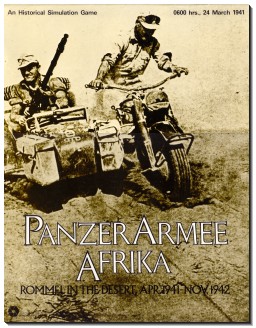
PanzerArmee Afrika, subtitled "Rommel in the Desert, April 1941 - November 1942", is a board wargame published by Simulations Publications, Inc. (SPI) in 1973 that simulates the World War II North African Campaign that pitted the Axis forces commanded by Erwin Rommel against Allied forces. The game was revised and republished in 1984 by Avalon Hill.

Conquistador, originally subtitled "The Age of Exploration: 1495–1600", is a board game published by Simulations Publications, Inc. (SPI) in 1976 that simulates the exploration of the New World in the 16th century. Players take on the role of European countries sending expeditions to find gold and establish colonies. Although the design uses the trappings of board wargames such as a hex map, combat is not a major part of the game.

NATO: Operational Combat in Europe in the 1970s is a board wargame published by Simulations Publications Inc. (SPI) in 1973 that simulates an invasion of Western Europe by the Warsaw Pact.

Wellington's Victory: Battle of Waterloo – 18 June 1815 is a board wargame simulation of the Battle of Waterloo, originally published by Simulations Publications, Inc. (SPI) in 1976.

Kursk, subtitled "History's Greatest Tank Battle, July 1943", is a board wargame published by Simulations Publications Inc. (SPI) in 1980 that simulates the 1943 Battle of Kursk during World War II. The game proved popular, reaching the top of SPI's Bestseller list, and was well received by critics.

The American Civil War: 1861–1865 is a board wargame published by Simulations Publications Inc. (SPI) in 1974 that is a strategic simulation of the American Civil War.
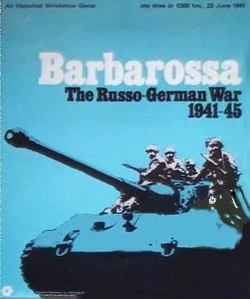
Barbarossa: The Russo-German War 1941–45 is a board wargame published by Simulations Publications Inc. (SPI) in 1969 that simulates the conflict between Germany and the Soviet Union on the Eastern Front of World War II. This was only SPI's second game produced during a preliminary round of "Test Series" games, and proved to be the most popular. Despite the title, taken from the German operational name for their initial invasion of the Soviet Union, the game covers the entire Eastern Front campaign from the German invasion in 1941 to the Fall of Berlin in 1945.

The Battle of Borodino: Napoleon in Russia 1812 is a board wargame published by Simulations Publications Inc. (SPI) in 1972 that is a simulation of the Battle of Borodino during the French invasion of Russia in 1812.
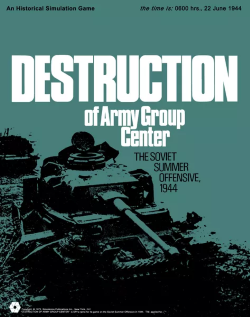
Destruction of Army Group Center, subtitled "The Soviet Summer Offensive, 1944" and often shortened to DAGC, is a board wargame published by Simulations Publications Inc. (SPI) in 1973 that simulates Operation Bagration, the June 1944 Soviet offensive during World War II that shattered the German line and marked the start of Germany's long retreat back to Berlin and the end of the war.
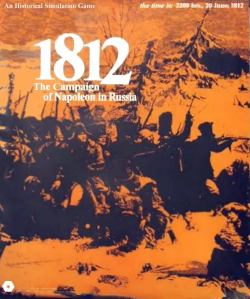
1812: The Campaign of Napoleon in Russia is a collection of two board wargames published by Simulations Publications Inc. (SPI) in 1972 that both simulate Napoleon's disastrous invasion of Russia. One game uses a traditional hex grid map, and the other uses a map of areas and regions.

El Alamein: Battles in North Africa, 1942 is a board wargame published by Simulations Publications Inc. (SPI) in 1973 that simulates the final four months of the North African campaign during World War II.

The Game of France, 1940: German Blitzkrieg in the West, originally titled "The Battle for France, 1940", is a board wargame originally published by Simulations Publications Inc. (SPI) in 1971 that was subsequently re-issued by Avalon Hill in 1972. Both editions simulate the World War II Battle of France in 1940, when the German blitzkrieg offensive overwhelmed French and British defenses in northern France.

Fulda Gap, subtitled "The First Battle of the Next War", is a board wargame published by Simulations Publications Inc. (SPI) in 1977 that simulates a hypothetical attack by Warsaw Pact forces against NATO defenders in West Germany using technology and tactics of the mid-1970s

La Grande Armée, subtitled "The Campaigns of Napoleon in Central Europe", is a board wargame published by Simulations Publications Inc. (SPI) in 1972 that simulates three campaigns of Napoleon.

Kursk: Operation Zitadelle is a board wargame published by Simulations Publications Inc. (SPI) in 1971. It was the first wargame to simulate the Battle of Kursk, the large tank battle during World War II.
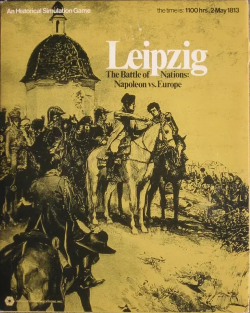
Leipzig: The Battle of Nations, subtitled "Napoleon vs. Europe", is a board wargame published by Simulations Publications Inc. (SPI) in 1969 that simulates the 1813 campaign of Napoleon in central Europe, including the Battle of Leipzig. The game was one of the first Napoleonic board wargames, and a number of innovative rules such as the effect of individual leaders on combat were adopted by other wargame publishers.

The Moscow Campaign, subtitled "Strike and Counterstrike Russia", is a board wargame published by Simulations Publications Inc. (SPI) in 1972 that simulates combat near Moscow during World War II.

Breakout & Pursuit: The Battle for France, 1944 is a board wargame published by Simulations Publications Inc. (SPI) in 1972 that simulates the breakout of Allied forces from Normandy during World War II, and their subsequent pursuit of retreating German forces.
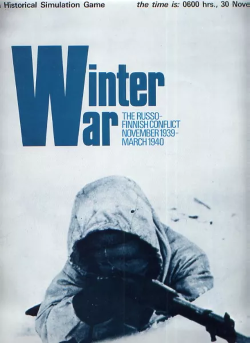
Winter War: The Russo-Finnish Conflict is a board wargame published by Simulations Publications Inc. (SPI) in 1972 that simulates the Soviet Union's 1939 invasion of Finland during World War II.

Turning Point: The Battle of Stalingrad is a board wargame published by Simulations Publications Inc. (SPI) in 1972 that simulates the Battle of Stalingrad during World War II, and the factors that led to the encirclement and destruction of Germany's Sixth Army.